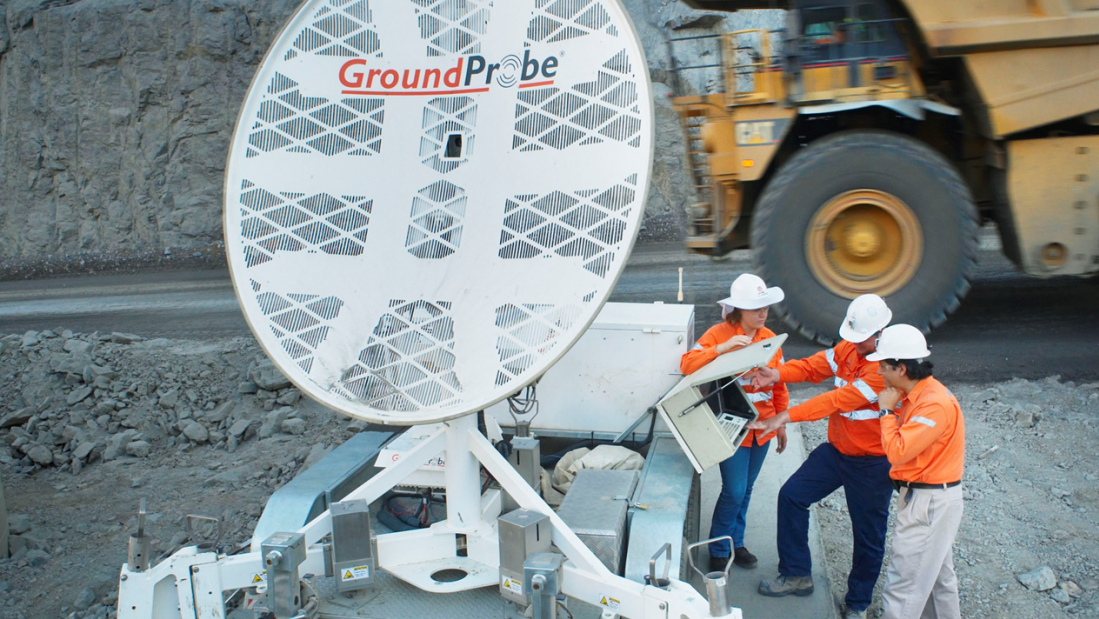With world-leading research into areas such as quantum computing, fintech, blockchain and cybersecurity all attracting global attention, the argument could be made that Australia’s innovation culture is riding a hockey-stick curve.
That’s hardly news for Groundprobe, the Brisbane-based company that emerged from research labs just a few years ago and sold itself to mining services firm Orica for $205m late last year.
Such a solid vote of confidence has paved the way for demonstrations of Groundprobe’s core products – the Geotech Monitoring Station (GMS) and Geotech Monitoring LiDAR (GML) solutions, which monitor sub-millimetre changes in mine walls and predict slippage – in 29 countries.
Groundprobe’s core intellectual property uses proprietary radar techniques to improve the accuracy of LiDAR laser-scanning technology by over 170 times – allowing the creation of highly accurate photos of an area, even in the complete darkness of a deep mine.
Behind those products is a culture of continuous improvement that recently saw the company named Australia’s most innovative company.
Building an Agile culture
That ranking, awarded by the Australian Financial Review, saw Groundprobe beat off tough competition, thanks to what information systems lead Johnny Serrano describes as an agile, risk-taking culture.
“We live by the fail-fast approach,” he told Information Age. “We have a pretty agile IT department, and the key has been trying to embed this into the whole business so we can cross-collaborate with other departments, and focus on achieving more business value.”
Employees are encouraged to regularly take a little time to step away from their normal responsibilities and explore their own solutions to problems or issues that are facing the company.
“There are inefficiencies that at times people are just too busy to look at, or to change,” Serrano explained.
“I encourage my team to come up with ideas and talk about them, and try them out. They’re given time each week to work on these ideas and see if it’s going to work.”
In one case, Serrano said, an employee’s independent research of market solutions led to a $20 piece of software that was able to solve “constant issues we were having. This one piece of software resolved all of our issues and gave us visibility into an issue that was impacting our customers.”
Leveraging innovation
Implementing one piece of software is one thing, but embedding that kind of risk-accepting culture into the historically risk-averse mining industry is another challenge entirely.
Long-term, strategic projects are laid down as in any company, but the ongoing focus on innovation has maintained Groundprobe’s agile culture as a stream of innovation that winds its way throughout the organisation.
“It’s really about this ideas approach to ensuring the company is running efficiently,” Serrano said. “It has helped us change the mindset so we are always looking for opportunities to improve.”
“Everyone has that mindset of working with each other, cross-collaborating with the expertise in a different area, and bringing that together so we can come up with solutions.”
This approach was helping the team investigate potential applications for critical new technologies such as artificial intelligence (AI) and machine learning (ML), automation, and the Internet of Things (IoT) paradigms into which the device’s autonomous scanning equipment fall.
These and other new technologies are constantly on the minds of the information services team, which has extended across the globe and is supporting a fast-growing Australian innovator whose solutions are regularly outpacing the competition.
One recent trial of the technology, as described by the AFR, saw the GML system put up against the existing system at a mine in Indonesia. It predicted that a section of the mine was going to collapse the next day, contradicting the existing system – but was proven right when the section did exactly that.
Building the software and systems to enable this kind of accuracy is no small matter – but it highlights the way that a heavily research-based technology endeavour can be escalated into a world-leading technology.
The key is building a corporate culture that nurtures this innovation at every opportunity. “Change is a constant,” Serrano said, “and we constantly need to change.”
“By empowering our people to look all the time and learn more about these technologies, we can explore that change. And if that becomes something bigger, then we can make a longer-term project out of it – and give it the backing it needs after that.”










